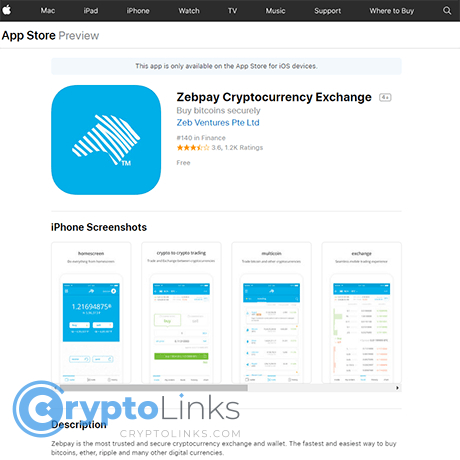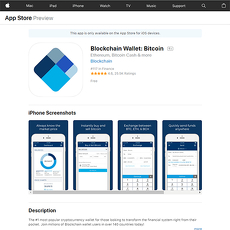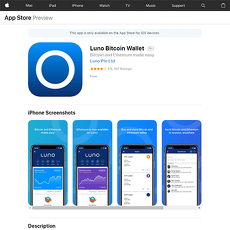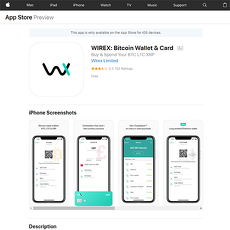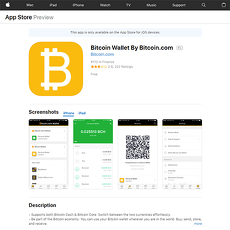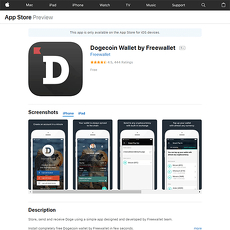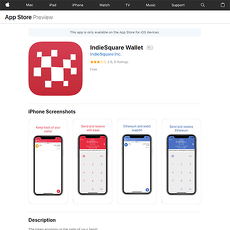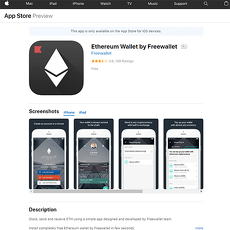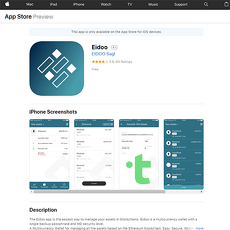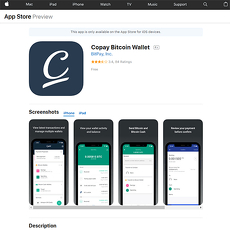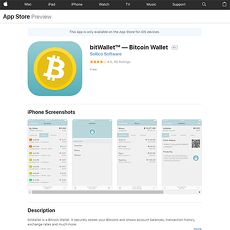Zebpay Wallet Review
Zebpay Wallet
itunes.apple.com
Zebpay Wallet Review Guide: Should You Trust This Crypto App for Your Bitcoin?
Ever wondered if your crypto is really safe with popular wallets like Zebpay? Or maybe you’re overwhelmed by the number of iOS wallet apps—all promising to be “the best.” What if you make the wrong call and end up with a wallet that’s buggy, confusing, or not as secure as they say?
Let’s be honest: picking a crypto wallet can turn into a headache. Most people aren’t just worried about UX—they’re worried if their Bitcoin, Ethereum, or even their meme coins could be at risk. And who can blame them? We’ve all seen stories about wallets that suddenly vanish, funds that “get lost,” or features that sounded simple… until you actually try to withdraw or send coins. It’s enough to make anyone hesitate.
Struggles People Face Choosing a Crypto Wallet
Navigating this stuff isn’t only tough for total beginners. Even seasoned traders want confidence that:
- Their funds are truly protected
- The app works smoothly (without mysterious crashes or poor support)
- Withdrawing, sending, or trading coins won’t feel like decoding a secret puzzle
If you read the latest Twitter threads or Reddit convos, you’ll spot real complaints—like new users getting locked out during KYC, or fee surprises when moving coins. These are the headaches that keep popping up, from India to anywhere else Zebpay operates.
I Promise You a Simple Solution
So, what’s the secret sauce to a wallet actually worth your trust? I’ll break down both the standout and about-time-for-an-upgrade features with zero hype. You’ll get:
- Step-by-step advice so you’re never lost when setting up
- Clear explanations of tricky or hidden rules—no “surprise” fees or restrictions
- First-hand answers to the doubts most users don’t admit they have
We’ve all had that moment of staring at two wallet icons and thinking, “which one won’t mess up my money?” I’ll walk you through how Zebpay compares, especially for iOS users, and show you what’s truly different (for better or worse).
Real Questions, Real Answers
No more generic promises. Is Zebpay really legal in India? Can you pull your money out without jumping through flaming hoops? Is it as secure as it sounds, or should you consider another option?
All those answers—straight, tested, and fact-checked—are below. You won’t just get an “it’s fine!” You’ll see real references, recent user experiences, and quick steps to get going if you choose Zebpay—or to avoid it if something squicks you out.
If you’ve ever worried about picking the wrong wallet app, stick around. Next up, I’ll show you exactly what Zebpay is, who swears by it, and why it’s causing so much buzz (and a few concerns) in the Indian crypto scene. Interested? Let’s answer your biggest wallet questions together in the next section—keep scrolling!
Quick Intro: What is Zebpay Wallet and Who’s It For?
I get it—when someone mentions a “crypto wallet,” your first reaction might be, “Okay, but what does it actually do for me?” Zebpay isn’t just another app crowded on your phone’s home screen. In the crazy world of Indian crypto, it’s a name that pops up for good reason, and for the right people, it’s a total game-changer.
Zebpay Basics Explained
At its core, Zebpay is a mobile-first crypto exchange and wallet platform built to make owning, buying, and selling coins less stressful. It originally launched in 2014 and made a big name for itself in India—today it’s available on iOS, Android, and a pretty smooth web version for those moments when you want to check your balance from a laptop or tablet.
- iOS App: Available on the App Store (Seriously—it takes less than 2 minutes to download...)
- Android: Also easy to grab from Google Play
- Web Access: For those who like a big screen view
With Zebpay, you can buy, sell, send, and receive crypto right from your phone’s comfort zone. The interface is designed so even first-timers don’t have to sweat bullet points trying to spot their balances or latest trades. The whole onboarding is genuinely quick—think less “tech geek” and more “everyday person figuring stuff out” vibes.
Who Should Consider Using It?
Here’s the truth: some crypto wallets make you feel like you need a PhD to just buy Bitcoin. Zebpay skips that nonsense.
- Crypto Beginners: If you’ve never owned any coins, Zebpay is friendly enough to get you started without Google-searching every step.
- Everyday Traders: Not everyone wants to stake, farm, and run a validator node. If your focus is buying, HODLing, or making quick trades in INR, Zebpay sticks to these basics beautifully.
- Indians Needing INR Support: Since it’s one of the best-known wallets for Indian residents, Zebpay supports fast INR deposits and withdrawals—no awkward workarounds needed.
- iOS Loyalists: If you’re team iPhone and tired of clunky, Android-centric crypto apps, this one’s built to play nice with Apple’s design style.
Anyone looking for deep DeFi, ultra-niche altcoin support, or privacy features like non-custodial seed management will notice some limits. But if you want simplicity and reliability for Indian rupees and the major coins, you’re in Zebpay’s sweet spot.
Supported Coins and Transactions
On to the juicy part—what coins can you actually store, trade, or send?
- Major Coins: Bitcoin (BTC), Ethereum (ETH), Tether (USDT), Polygon (MATIC), and a growing list of others. The platform keeps up with popular requests but won’t overwhelm you with risky meme coins.
- Trading Pairs: You can swap INR with top cryptos and move coins between wallets. The INR-focused trading is a lifesaver for Indian users who hate the hassle of converting between currencies.
- Send & Receive: Sending and receiving is as straightforward as scanning a QR code or sharing your Zebpay wallet address.
- Fiat Integration: INR deposits and withdrawals are seamless with support for UPI, IMPS, and NEFT—ultra relevant as banks in India tighten their policies. No more complicated hacks to cash out your gains.
One thing to note: While Zebpay’s coin selection isn’t as huge as some global exchanges (CoinGecko recently put Indian trading volumes into the global top ten, but most heavy users still stick to BTC and ETH), you’re covered for all the essentials and a handful of trendier altcoins.
Is Zebpay Still Legal and Operational in India?
Nothing keeps crypto users in India up at night like this: Is Zebpay actually legal? Can I really trust it with my money with all the regulation news flying around?
Here’s the straight answer—as of 2024, Zebpay is 100% legal and regulated enough to operate in India. It’s a registered entity under Indian law and regularly updates its KYC and AML procedures to stay compliant when the Reserve Bank of India, or the government, changes the rules. When the RBI put crypto on ice in 2018, Zebpay did temporarily relocate—but the ban was overturned, and by 2020, Zebpay was back in India with headquarters in Singapore and new leadership.
“In times of uncertainty, the clearest path is the one built on transparency and trust.” — That fits Zebpay’s comeback story perfectly.
Right now, you’ll see the Zebpay app on official app stores, ongoing customer support, and daily social media and email communication. The wallet even pro-actively informs users about regulatory news and potential policy changes affecting crypto trading or withdrawals.
Indian authorities haven’t banned crypto ownership—just tightened up KYC and tax reporting. Zebpay embraces this, making it easier (not scarier) to stay compliant.
Choosing the best crypto wallet shouldn’t feel like rolling dice. With so much smoke and noise around regulations and “India bans Bitcoin” headlines, it’s easy to get stuck second-guessing the safest way to start. That’s why in the next section, I’ll walk through how to actually set up Zebpay on your iPhone, clear up all the KYC steps, and make sure your crypto stays as safe as possible. Have you ever wondered what happens if your KYC gets rejected, or if you can register in under 10 minutes? Stick around—those answers (and pro tips you won’t find on the official site) are coming up next!
Setting Up Zebpay Wallet on iOS: What You Need to Know
Starting with any crypto wallet can feel like stepping into a maze—lots of big promises, a few dark corners, and occasionally some surprises nobody warns you about. It’s totally normal to worry about getting stuck during KYC or accidentally locking yourself out. Let’s break it down, step by step, so you can sign up and start your crypto journey with Zebpay right from your iPhone, minus the headaches.
Downloading and Registration: Step-by-Step
Getting Zebpay onto your iPhone is, thankfully, straightforward. Here’s exactly how I did it:
- Grab the App: Head to the App Store and search for “Zebpay.” Make sure the developer says “Zeb Ventures Pte Ltd”—there are plenty of lookalikes.
- Initial Signup: Open the app, tap on “Sign Up,” and punch in your phone number and a fresh, strong password. (I always use a mix of letters, numbers, and a symbol or two—keeps out most of the riffraff!)
- KYC Verification: Here’s where a lot of first-timers pause. In India, Zebpay has to check your identity. You’ll need:
- Aadhar Card or PAN Card (scanned or snapped clearly)
- Your selfie (yep, a quick photo—no filters needed!)
- Bank details if you want to deposit or withdraw INR
KYC usually takes just a few hours, but I’ve heard from readers that during high-traffic times it can sneak past 24 hours. If you get stuck, their in-app support chat is surprisingly responsive.
“Security is not a product, but a process.” — Bruce Schneier
First Login and Security Checklist
On your first login, Zebpay will prompt you to set up a PIN or enable biometric security. Here’s what I suggest (based on a few close calls with nearly losing access myself):
- Set a 6-digit PIN (don’t recycle one from your debit card).
- Enable Face ID or fingerprint unlock—super quick, and way more secure than just a password.
- Read the pop-ups. I know, I know—boring, right? But Zebpay explains how they store the majority of user funds in “cold wallets” (offline, away from hackers). That means only a tiny fraction is ever online at any time.
- Private key management: Unlike some wallets, Zebpay is custodial. You don’t get direct access to a private key. If you want that extra layer of control, consider a non-custodial wallet, but for most people, Zebpay’s safety and insurance on funds will be enough.
I always recommend: get your email alerts ON for every login and withdrawal request. This is a lifesaver if someone ever tries to access your funds without you knowing.
Funding Your Zebpay Wallet
Once KYC is green-lit, you can actually use your wallet. Here’s what works (and what to watch out for):
- Deposit INR: Link your bank account, then choose either UPI (instant, low-fee) or NEFT/IMPS. The first time I tried UPI, the deposit landed in less than 60 seconds. If you don’t see it after 10 minutes, check your UPI app—sometimes requests get stuck there.
- Deposit Crypto: Tap “Deposit” and pick your coin. Zebpay shows your wallet address and a QR code—copy carefully, double check, and then send from your external wallet or exchange.
Keep in mind, some coins (like USDT on Ethereum) will have network fees. The app tells you exactly how much before you confirm anything.
Withdrawing Cash or Crypto: What’s Possible?
Here’s where a lot of users get nervous: can you actually get your money out? The short answer—yes, but there are a few things to know:
- Withdraw INR: Choose “Withdraw INR,” enter your amount, and select your verified bank account. UPI usually lands within 5–30 minutes; NEFT may take a couple of hours. There’s a small fee, and minimum withdrawal is usually ₹100.
- Withdraw Crypto: Tap “Send,” input the recipient wallet address (triple check!), and confirm. Zebpay applies network fees, and a few coins (like Bitcoin) have withdrawal minimums.
Pro tip: Don’t panic if a crypto transaction is “pending” for a while. Some networks (especially BTC, ETH during high fees) can take longer to confirm. Zebpay always provides a unique transaction hash so you can track it live on the blockchain.
One thing worth mentioning: Zebpay puts strong internal controls on withdrawals. If you try to move a very large amount or change bank details, sometimes you may need to re-confirm your identity or speak with support. Annoying? Sure—but it’s saved people from losing funds to phishing more than once.
Does all this sound like too much, or not enough? Wondering which features actually matter in daily use—and what’s frustrating versus fantastic? In the next part, I’ll break down what works (and what still needs work) inside Zebpay’s app so you know before you commit one satoshi. Ready to separate the hype from reality?
Zebpay Wallet Features: The Good, The Bad, and What’s Missing
Let's be honest—crypto wallets live or die by their real-world features, not just fancy marketing promises. If you’re reading this on your iPhone, you probably care about ease of use, rock-solid security, and some cool extras that make you feel one step ahead of the crowds. Here’s my honest breakdown of where Zebpay stands, with all the highs and lows you need to know.
User Experience and App Design
Have you ever downloaded a wallet app and immediately felt lost? Thankfully, Zebpay doesn’t fall into that trap. The iOS app is slick, responsive, and organized for real people—not just crypto pros. Navigation is simple, the key actions (buy, sell, receive, send) are just a tap away, and you won’t get bombarded by confusing charts or distractions.
- Signup is smooth, with clean prompts. No guesswork, no endless form fields.
- You can see all your balances and recent transactions at a glance.
- Color contrast and icons make it easy to spot important features, even if you’re new to things.
But—it’s not perfect. Some users have flagged that the dark mode can feel a bit washed out, and occasional app updates have caused login hiccups. I’d love to see a custom widget or push notification options for price alerts, which is something other wallets (like Trust or Coinbase Wallet) are already getting right.
“Design is not just what it looks like and feels like. Design is how it works.” – Steve Jobs
Security: Is Zebpay Really Safe?
Let’s get straight to the point—security is the cornerstone. Zebpay claims to use robust security models, with the majority of crypto assets stored in cold wallets. This means even if their servers are ever hacked, your assets should remain out of reach from most online threats.
- Cold storage for bulk reserves
- Regular audits by third-party security experts
- Two-factor authentication via SMS or authenticator apps
- PIN code and biometric login support on iOS devices
However, no system is 100% bulletproof. In 2023, a security research firm highlighted the risks of SIM-swap attacks across several Indian exchanges, reminding users everywhere to avoid keeping too much crypto on any single platform if you’re not actively trading. Personal responsibility matters! Never share your PIN; always double-check device security.
A few Zebpay users have reported slowdowns during market surges when everyone logs in at once, though I haven’t seen reports of actual wallet breaches. Still—if you're searching for true non-custodial control, you might find Zebpay a bit limiting compared to totally decentralized options.
Trading, Staking, and Other Extras
Zebpay’s in-app exchange makes it possible to buy, sell, and swap Bitcoin or popular altcoins (like ETH, LTC, and MATIC) directly within your wallet—no external transfers needed. For Indian users, instant INR deposits/withdrawals with UPI and IMPS are a real game-changer.
- In-app trading: Easy swaps between top coins
- Staking: Limited options, but you can stake selected coins (like ETH and MATIC) and earn rewards
- Zebpay Earn: Hold eligible crypto for passive interest, no technical skills required
If you’re looking to explore DeFi tokens, NFTs, or dApps, Zebpay doesn’t open those doors yet—this wallet is built for straightforward investing and trading. But for users wanting to earn a little passive income or swap INR for the crypto basics, the setup is solid.
Where Zebpay Falls Short
No app is flawless, right? Here’s what I wish Zebpay would improve (and what might push some users to look elsewhere):
- Limited coin support: You’re mostly locked to “top cap” coins. No meme tokens or obscure altcoins here.
- No direct NFT or DeFi support: Can’t connect to OpenSea, Uniswap, or dApps directly.
- Occasional withdrawal bottlenecks: During big market moves, INR withdrawals could take longer than usual.
- No open-source code: If you’re the ultra-cautious type, closed-source wallets might feel like a trust leap.
There’s also no built-in tax calculation or performance tracking, unlike some competitors. Power users may find the analytics basic for anything past simple trading.
So why do so many people stick with Zebpay, even with these tradeoffs? What would it take for an upgrade to make it the #1 wallet for iOS and Indian crypto fans alike?
Got burning questions about withdrawals, legality, or how Zebpay stacks up head-to-head with the top wallets on iOS? You’re in luck—because coming up next, I’ll be answering the biggest questions real users have (with no sugarcoating). Ready to finally get the no-BS answers you’ve needed?
Most Asked Zebpay Wallet Questions—Answered Honestly
If you’ve typed “Is Zebpay wallet safe?”, “How to withdraw INR from Zebpay?”, or “Can I use Zebpay if I’m just starting?” into Google, you’re definitely not alone. I see these questions show up again and again—from total beginners, busy traders, and even some pros getting their feet wet with Indian exchanges. Let’s break down, in plain English, the straight answers you deserve. No hype, just what’s real for anyone curious, nervous, or fed up with half-baked reviews.
Can I Withdraw Money from Zebpay? How?
Absolutely, you can withdraw money—both crypto and Indian Rupees (INR)—from Zebpay. But here’s the deal: it’s not always as instant or “one-tap” as the ads make it seem. Here’s how it really goes:
- INR Withdrawals: Head to the ‘Withdraw’ section on the app, select INR, punch in the amount, and pick your linked bank account. Make sure you’ve completed KYC—otherwise, nothing moves.
- Processing Time: In my experience, it usually lands within a couple of hours, though heavy network loads or compliance checks can stretch it to up to 2 business days. If it takes longer, check for bank holidays or contact support.
- Crypto Withdrawals: Just hit the send/withdraw option, paste your outside wallet address, confirm—you’re done. Double and triple-check your address; mistakes here are permanent. Really, I mean it!
- Fees & Limits: Zebpay has a withdrawal fee (varies by coin and INR). For INR, as of writing, there’s a ₹10-15 flat fee. Crypto fees depend on network costs and can spike during busy times. Check their official fee schedule for updates.
Pro Tip: Some users on forums report “pending” status during peak demand. If this happens, stay calm—it’s probably compliance checks. But do reach out to their support if it takes more than two days. Keep your transaction IDs handy for faster resolution.
Is Zebpay Legal? Should I Worry?
The short answer? Yes, Zebpay is legal and operational in India—but the crypto regulatory scene here changes quicker than Bitcoin prices during a bull run.
- Why the confusion? Crypto in India has walked through a legal minefield over the years—crypto bans, banking restrictions, court reversals.
- Current Status (as of 2024): Zebpay complies with all Indian KYC/AML norms and operates under strict guidelines. They’re a registered company, pay their taxes, and haven’t run afoul of the authorities.
- Media & Regulatory Updates: Reserve Bank of India (RBI) bans were overturned by the Supreme Court in March 2020, and so far, no new direct bans have come into effect. But yes, governments regularly propose new bills, keeping everyone on their toes. If you ever feel unsure, check the Zebpay blog for the latest status.
Bottom line: As of now, you can legally use Zebpay in India for buying, selling, or holding crypto. If regulatory risks make you nervous, consider how much you keep on any centralized platform—stay nimble, and always be ready to move if things change.
Is Zebpay Secure Enough for My Crypto?
This one gets a lot of heated debate. Here’s how it plays out in the real world:
- Cold Storage: Zebpay claims to keep 98% of user funds in cold wallets (offline). That’s a big step up from the “hot” wallets hackers target.
- 2FA & User Security: Always enable two-factor authentication. Even though Zebpay secures their end, your password and SMS/email access are still your personal weak points.
- Insurance? Zebpay doesn’t currently offer crypto insurance like some exchanges in the US or EU. So, if there’s a catastrophic hack or scam, recovery could be tricky. This is an industry-wide problem, not just Zebpay’s.
- User Reviews: According to App Store ratings and Reddit threads, most users haven’t reported hacks or big breaches with Zebpay itself—but customer service can be slow during support spikes.
- Your Role: Don’t keep long-term holdings you can’t afford to lose on any exchange wallet, including Zebpay. Self-custody (hardware wallets, for example) beats app wallets for ironclad safety.
If you’re storing a few thousand rupees for quick trades, Zebpay security should be fine. Going long-term or hefty? Consider splitting funds—some stay on Zebpay for flexibility, most head to cold storage.
Still unsure? Check my “Ultimate Guide to Best iOS Bitcoin Wallet and Altcoin Wallets” for wallets where you hold the keys.
How Do I Activate or Get Started with Zebpay Fast?
Here’s the snappy setup for anyone who just wants to get in and start trading:
- Install the Zebpay app from the official App Store listing.
- Register using your mobile number and a strong password. Don’t use your main SIM for multiple wallets or exchanges if you can help it—extra layer of privacy here.
- Complete KYC—upload your Aadhaar, PAN card, and a recent selfie. Approval usually takes under 24 hours, sometimes just minutes!
- Set a PIN and enable biometric security (fingerprint or Face ID) immediately after first login.
- To fund: Go to “Deposit”, choose UPI/bank transfer, input the amount, and follow the prompt. OR, copy your Zebpay crypto address and transfer coins in.
Tip: The first deposit may need a manual confirmation if your bank’s anti-fraud triggers. Don’t panic—just check your notifications and confirm any pending transaction with your bank if needed.
Comparison: Zebpay vs. Other iOS Wallets
The million-rupee question: When is Zebpay the right pick, and when should you look beyond?
- Zebpay: Simple for INR/crypto swaps, strong compliance, easy for India-based users, and quick for bank withdrawals. Lower learning curve for new users. Downside: not your keys, so not your coins for maximum security buffs.
- Trust Wallet: Ideal if you crave full control of your private keys, want to store 300+ coins (including NFTs), and explore DeFi/dApps—and yes, it’s non-custodial. No direct INR integration though, and you’ll have to use exchanges to buy/sell INR.
- Coinbase Wallet: User-friendly and well-integrated with the Coinbase ecosystem, but limited for direct INR support since it doesn’t target India’s fiat market. Top choice if you hold coins beyond Bitcoin/Ethereum and want good staking options.
- Who should pick what?: If you want fast INR deposits/withdrawals and a local Indian wallet—Zebpay wins. Want to hold your own keys and go global with DeFi, multi-chain, and NFTs? Trust or Coinbase Wallet take the prize.
Troubleshooting: What If I Get Stuck?
Let’s be real—most of us have hit that “Uh oh” moment sooner or later. Here’s how to unstick yourself fast:
- Withdrawals/Deposits Not Settling: Check the transaction status in-app. Look for any “pending KYC” or “waiting for confirmation” labels. If it’s been hours, log a ticket in the Help section, or email [email protected]. Include your registered mobile number and transaction ID for faster help.
- App Crashes or Freezes: Clear cache, restart your phone, update the app. If that fails, reinstall it—your funds are safe on Zebpay’s servers (not lost if you reinstall, unlike self-custody wallets!)
- Login Issues: Reset password via their “Forgot Password” link, and check SMS/email for recovery links. If 2FA fails, reach out to support and be ready to answer ID security questions.
- Getting Stuck Anywhere Else? Their official FAQ & Help Center is detailed. Still lost? Bookmark my iOS Wallet Guide for quick troubleshooting steps, especially if you end up switching wallets down the road.
I know crypto sometimes feels like running a maze blindfolded. We all hit snags. But with a bit of know-how—and the right backup resources—you’ll get unstuck in no time.
Still curious which wallet truly matches your style: stick with Zebpay, switch to Trust, or explore other alternatives? In the next part, I’ll uncover not just my final take, but the practical steps to future-proof your wallet security and pick the smartest home for your coins. Ready to find out where your crypto belongs—and snag a few pro tips you’ll wish you’d known sooner? Keep going—your best decision might be just one scroll away.
My Final Thoughts on Zebpay & Your Next Steps
So, you’ve stuck with me through the ins and outs of Zebpay—configuring it, weighing the pros and cons, checking the facts, and comparing it with other wallet heavyweights. If you’re still wondering, “Is this the iOS crypto wallet I should really use?” let’s finish strong and clear up any last doubts.
Should You Use Zebpay Wallet or Something Else?
Zebpay hits the sweet spot for Indian crypto traders and those who want a straightforward mobile wallet with integrated trading. If you want to buy, sell, and store major coins (like Bitcoin, Ethereum, and a few top alts) directly in INR and don’t need every advanced feature under the sun, Zebpay is a genuinely solid fit.
Keep in mind:
- Regulation comfort: If you prefer a wallet that’s local and in line with India’s current rules, Zebpay’s strong compliance track record offers extra peace of mind.
- Trading as you store: Buying, selling, and holding in one app streamlines things for beginners and active traders alike.
- Staking & DeFi Stuff: If you want the bleeding edge—think full DeFi, NFT support, or super-broad token lists—you may bump into some walls with Zebpay. That’s where options like Coinbase Wallet or Trust Wallet might shine.
Real talk? I’ve heard from folks who outgrew Zebpay’s basic feature set as they got deeper into crypto, but for everyone else, the simplicity is actually a plus. Less noise, fewer ways to mess up.
Smart Tips for Staying Secure
No matter which wallet you choose, your best defense is good security habits. Here’s what I always remind friends and newcomers:
- Stick to unique PINs and passcodes. Avoid birthdays and anything easy to guess—really, don’t use 1234.
- Backup, backup, backup. Write down recovery phrases and store them offline (and never, ever in your email drafts!).
- Beware of scams. Even the most trusted companies can’t protect you from phishing messages or fake support calls. Always use the official app or website—no shortcuts from WhatsApp links.
- Stay on top of updates. Regulators and apps change the playbook often; keep an eye on your email or the app notifications for news, especially for Indian users.
Handy Resources for iOS Crypto Wallets
For wallet updates, new guides, or if something big changes in the crypto space, I always drop the latest news and breakdowns here at Cryptolinks News. Bookmark it—it’s that simple.
Ready to Start? Try Zebpay or Explore Your Best Option
If you’re ready, there’s no harm in giving Zebpay a whirl—start with small amounts, get a feel for withdrawing and trading, and use the tips above to keep your coins extra safe. Not completely sure? Pick one or two wallets, use some test funds, and see which one actually fits your trading style.
Crypto is still early—and so are you. The more you experiment (safely), the smarter you get. And whenever you hit a bump, remember this page (or drop your question below). There’s always a next step and a better wallet waiting if you need it.
Enjoy the ride, stay curious, and keep your crypto safe. Got your own experience or a burning Zebpay question? Pop it in the comments!

